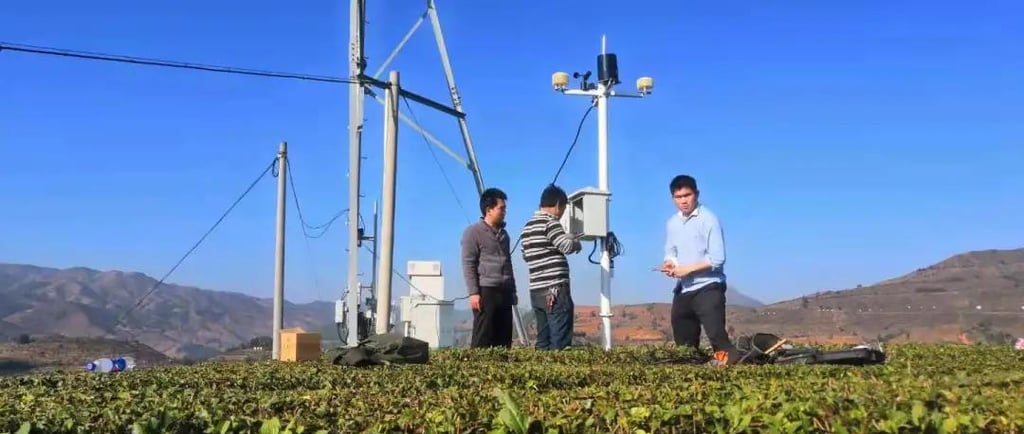The Internet of Things (IoT) Revolutionising Tea Processing
Discover how IoT is revolutionizing tea processing! Explore smart tech applications improving efficiency, quality, and sustainability across green, black, and white teas.
TEA LIFE


Ever wondered how technology meets tradition in tea production? With IoT stepping into the tea industry, everything from leaf picking to drying is becoming smarter, more efficient, and, most importantly, consistent in quality. Whether you’re a tea connoisseur, a producer, or just someone who loves innovation, this is a fascinating shift that’s worth diving into.
What is IoT Bringing to Tea Production?
IoT isn’t just about smart homes or wearable devices anymore; it’s deeply embedded in industries. In tea processing, IoT integrates sensors, data analytics, and automation to transform the way tea is made. Think of it as giving machines the ability to monitor, learn, and adapt, ensuring every batch of tea is perfect.
Here’s a breakdown of how IoT is transforming tea production, focusing on different tea types and their unique processes.
IoT in Green Tea Processing
Green tea relies heavily on precision. From leaf freshness to the drying stage, every step determines the tea's flavour and aroma.
Fresh Leaf Detection: Using image processing technologies, machines now assess the tenderness of tea leaves. This ensures only high-quality leaves are picked, leaving no room for guesswork.
Smart Heat Control: During the critical "kill-green" (deactivation of enzymes) stage, IoT-powered systems use machine vision and genetic algorithms to monitor moisture levels and adjust temperature in real time.
R&D in Rolling Technology: An XGBoost-based rolling parameter system recommends settings to optimise tea leaf shape and cell damage, leading to a richer flavour profile.
As technology perfects these processes, tea enthusiasts can experience the results more profoundly, especially when brewing green tea in a Yixing zisha teapot, a traditional vessel prized for enhancing delicate flavors through its unique clay composition.
IoT in White Tea Processing
White tea’s simplicity makes wilt and drying the most critical steps. IoT ensures that these natural processes are precisely controlled.
Temperature & Humidity Control: Automated production lines can stabilise these parameters using sensors, making the process independent of external environmental changes.
Advanced Systems: Multi-wavelength LED systems help refine wilt stages by simulating ideal sunlight conditions while enabling remote monitoring through IoT integration.
IoT in Oolong Tea Processing
Oolong tea, known for its complex flavours, requires meticulous monitoring during wilt and fermentation. IoT takes the lead here:
Automated Wilt Monitoring: By tracking volatile compounds in the air, IoT systems adjust parameters in real time.
Machine Learning in Shaking: IoT-enabled machines mimic the manual shaking process, with adjustable amplitudes and real-time quality checks to improve leaf texture and aroma.
AI-Driven Optimisation: Using big data, IoT systems customise production lines for different Oolong tea varieties, boosting efficiency and maintaining quality.
IoT in Black Tea Processing
For black tea, the focus lies in fermentation and drying, where IoT adds a significant edge.
Precision Fermentation: IoT-powered systems monitor oxygen levels, temperature, and humidity, ensuring a uniform fermentation process.
Real-Time Data: Sensors track the chemical changes in leaves, providing insights that help machines adjust the fermentation environment on the go.
Smart Drying: Using spectroscopic technology, IoT identifies the perfect drying stage, ensuring tea achieves its ideal flavour.
IoT in Dark Tea Processing
Dark teas like Pu'er rely on the unique process of post-fermentation, and IoT simplifies what was once an art.
Smart Fermentation Systems: IoT monitors microbial activity, temperature, and moisture to ensure a consistent end product.
Traceability: QR codes powered by IoT allow consumers to trace tea from plantation to cup, providing transparency and building trust.
Why Does IoT in Tea Matter to You?
For producers, it’s all about efficiency, reduced waste, and consistency. For consumers, IoT brings better-quality tea, a story behind every cup, and confidence in the product's safety and origin.
FAQs
1. How does IoT affect traditional tea craftsmanship?
IoT doesn’t replace craftsmanship; it enhances it by ensuring consistency while respecting traditional processes. It gives artisans the tools to create better tea without compromising authenticity.
2. Does IoT make tea more expensive?
Not necessarily. While there’s an initial cost for IoT integration, the increased efficiency and reduced waste often balance the expense, sometimes even lowering the production cost.
3. Can consumers benefit from IoT in tea?
Yes! IoT ensures better quality, traceability, and even customisation options for specific preferences.
Final Sip
IoT is rewriting the rules of tea production, from plucking the leaves to packaging the product. It ensures that every cup of tea is not just a beverage but a masterpiece crafted with precision. Whether you’re a tea lover or an innovator, this blend of technology and tradition is something to raise your teacup to.
